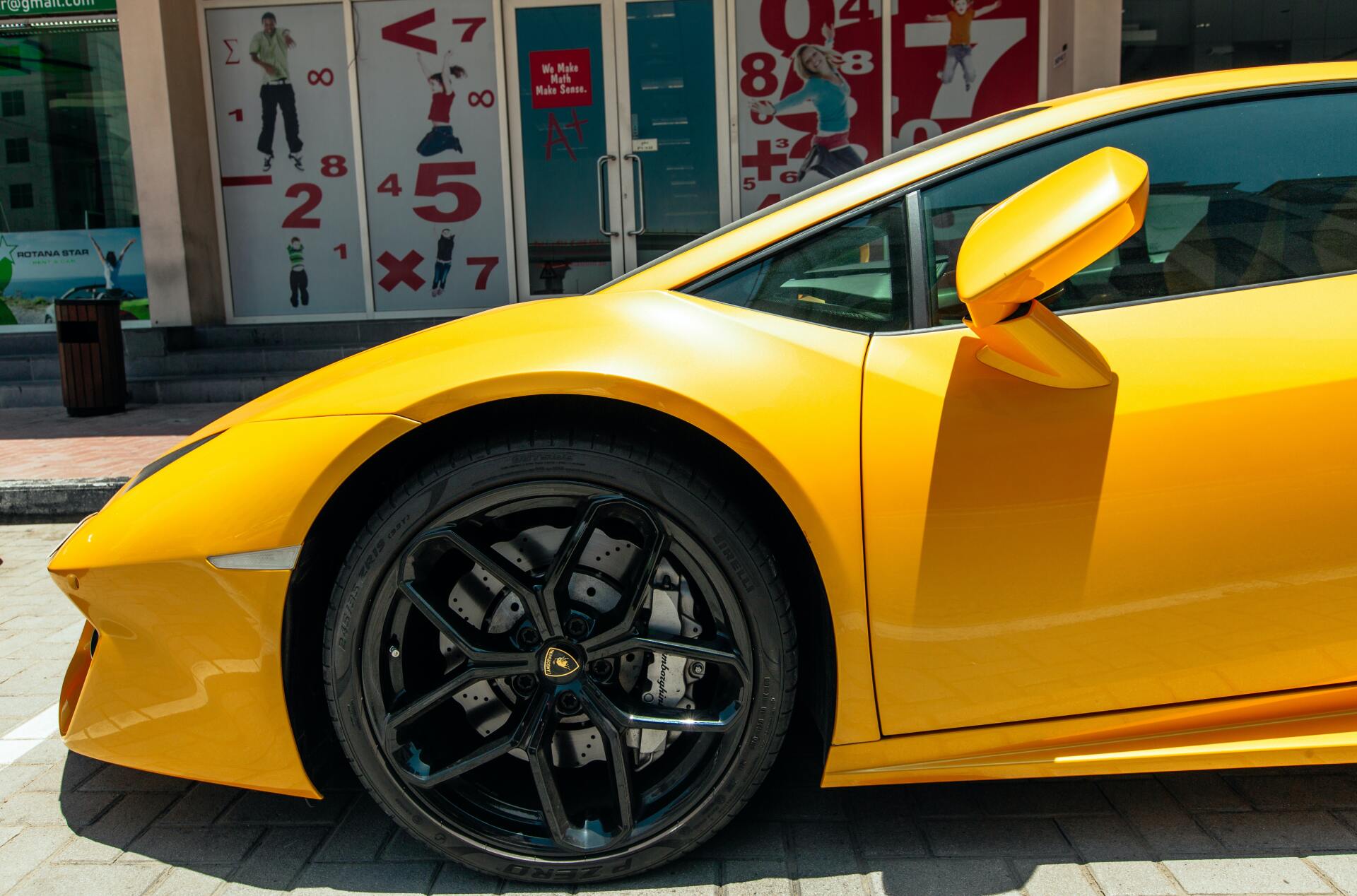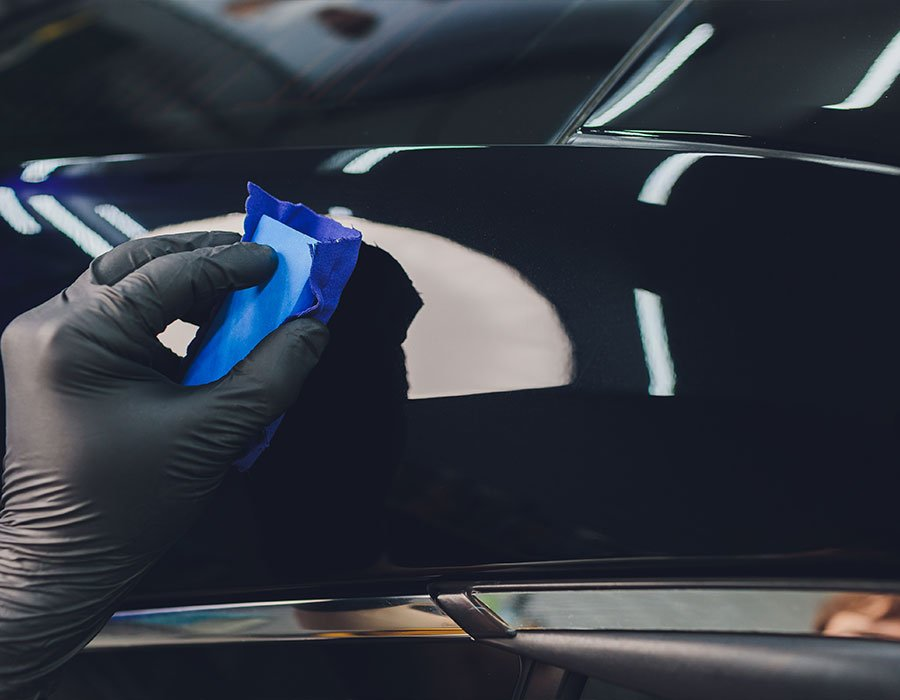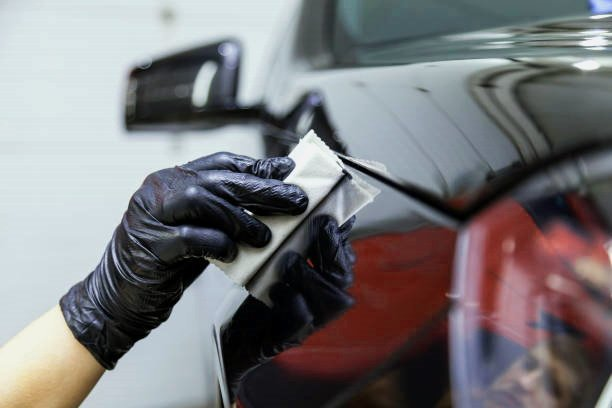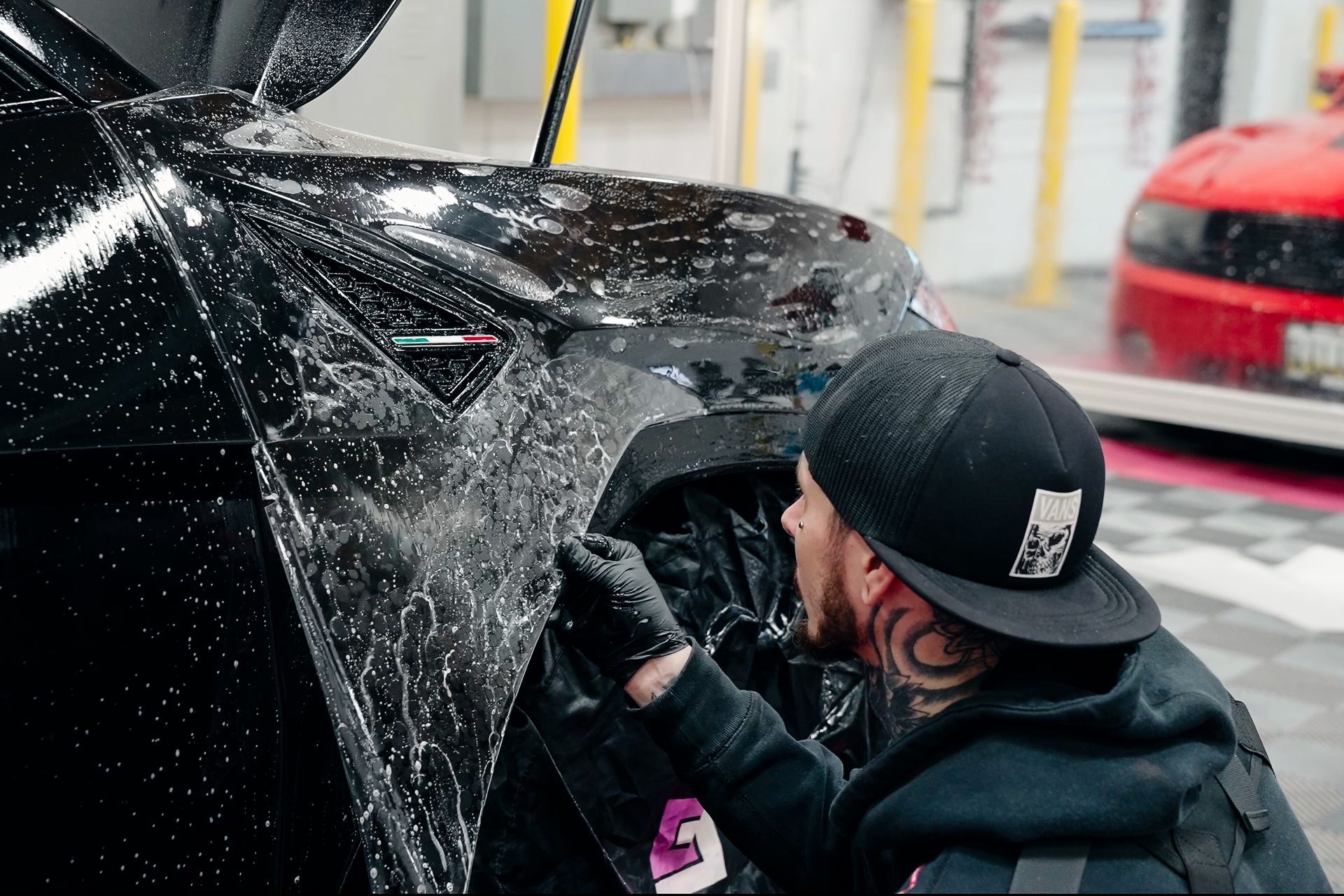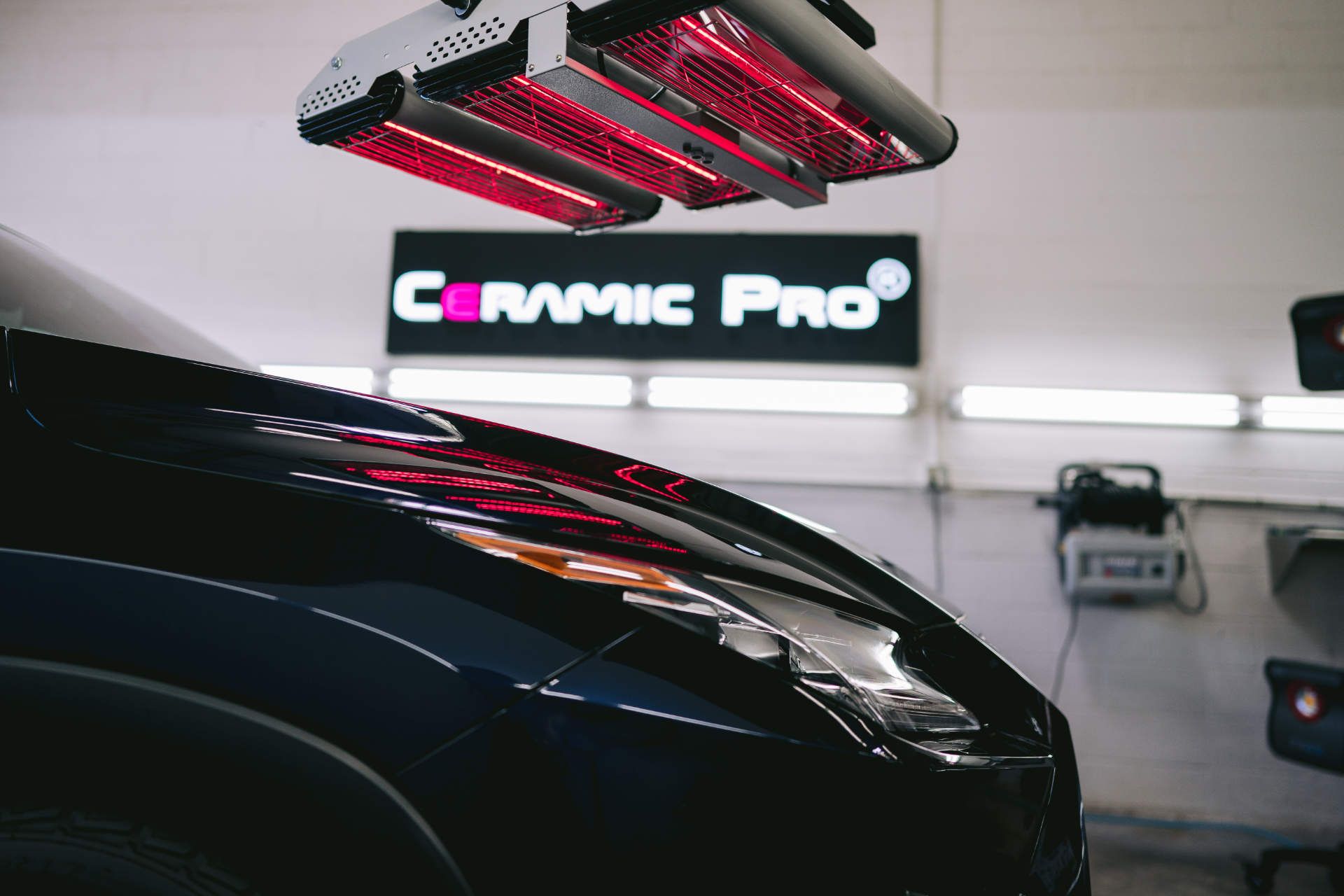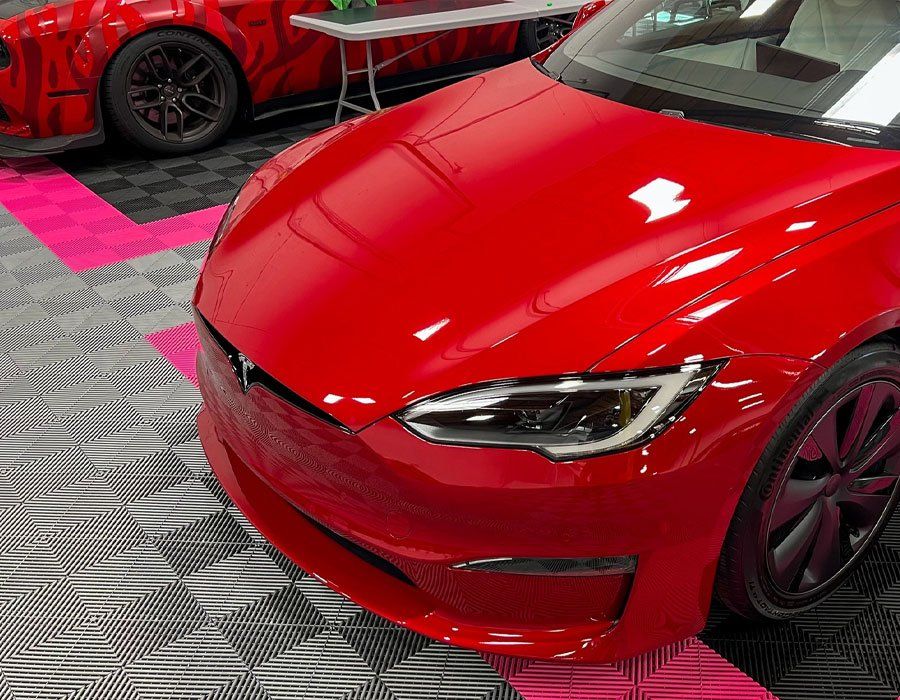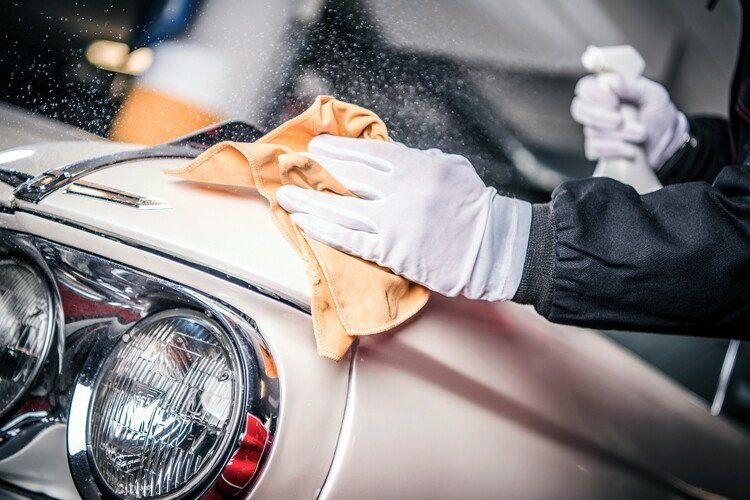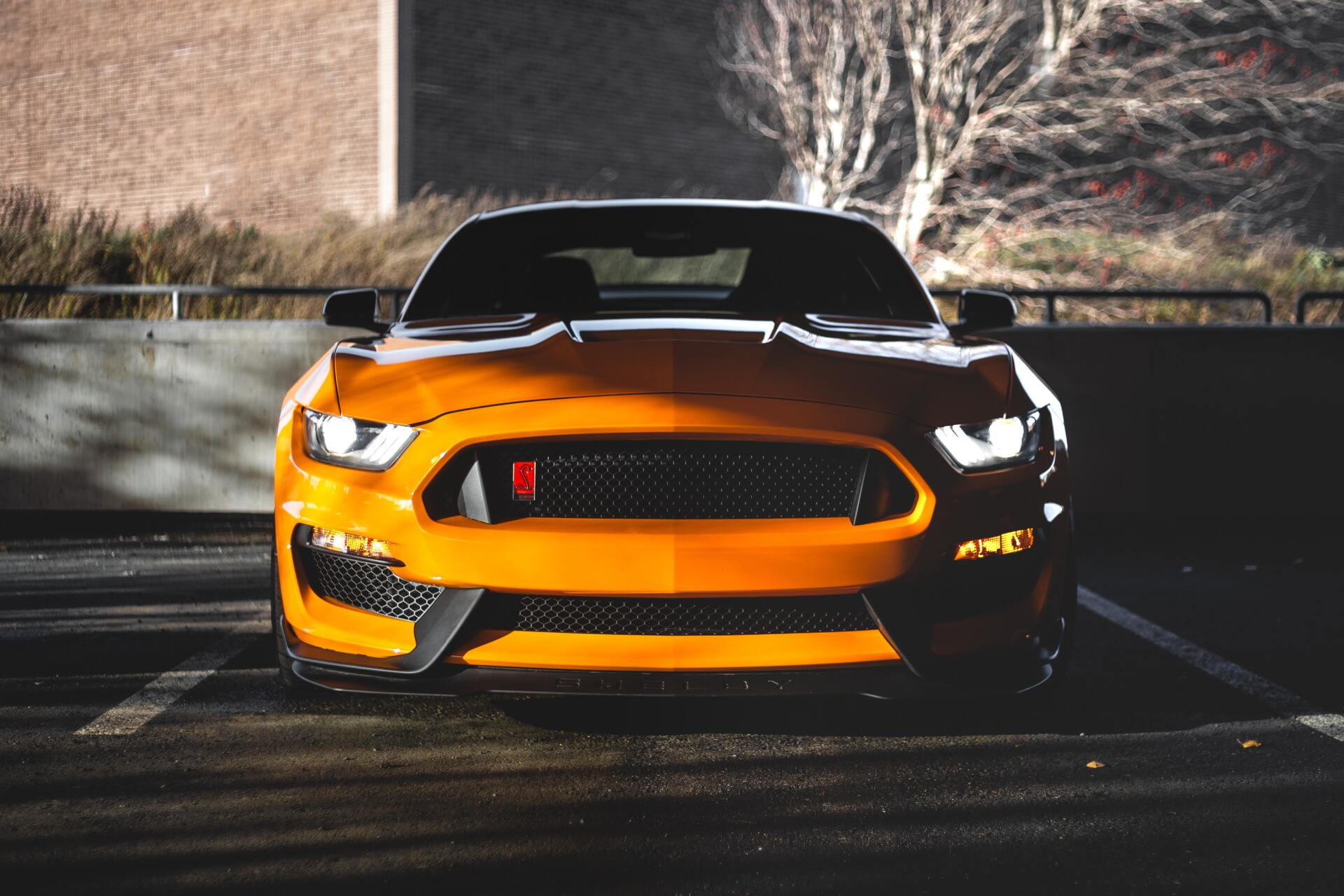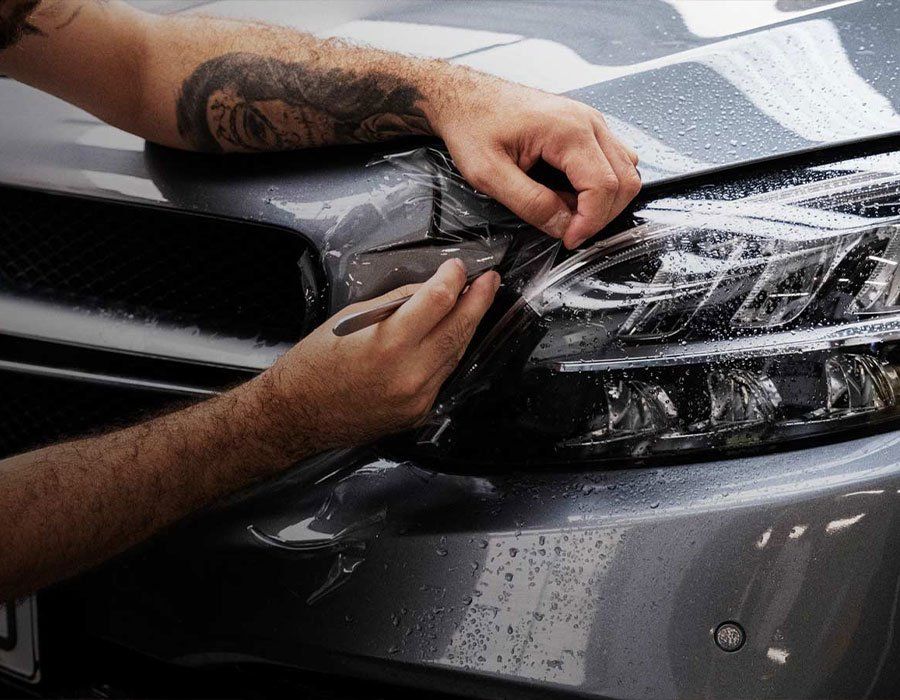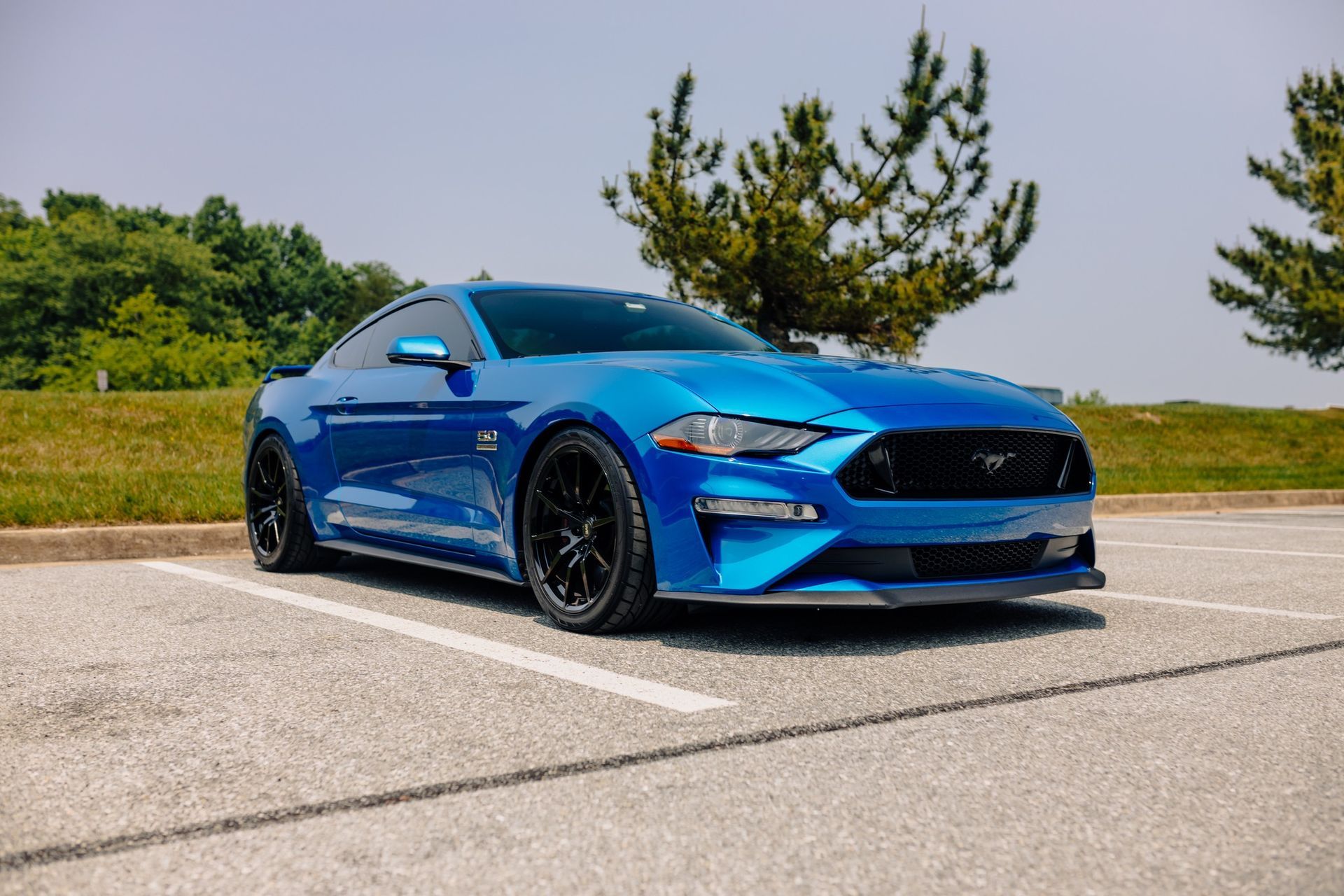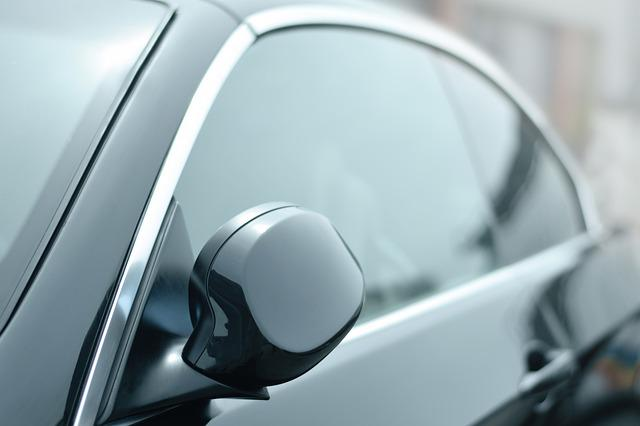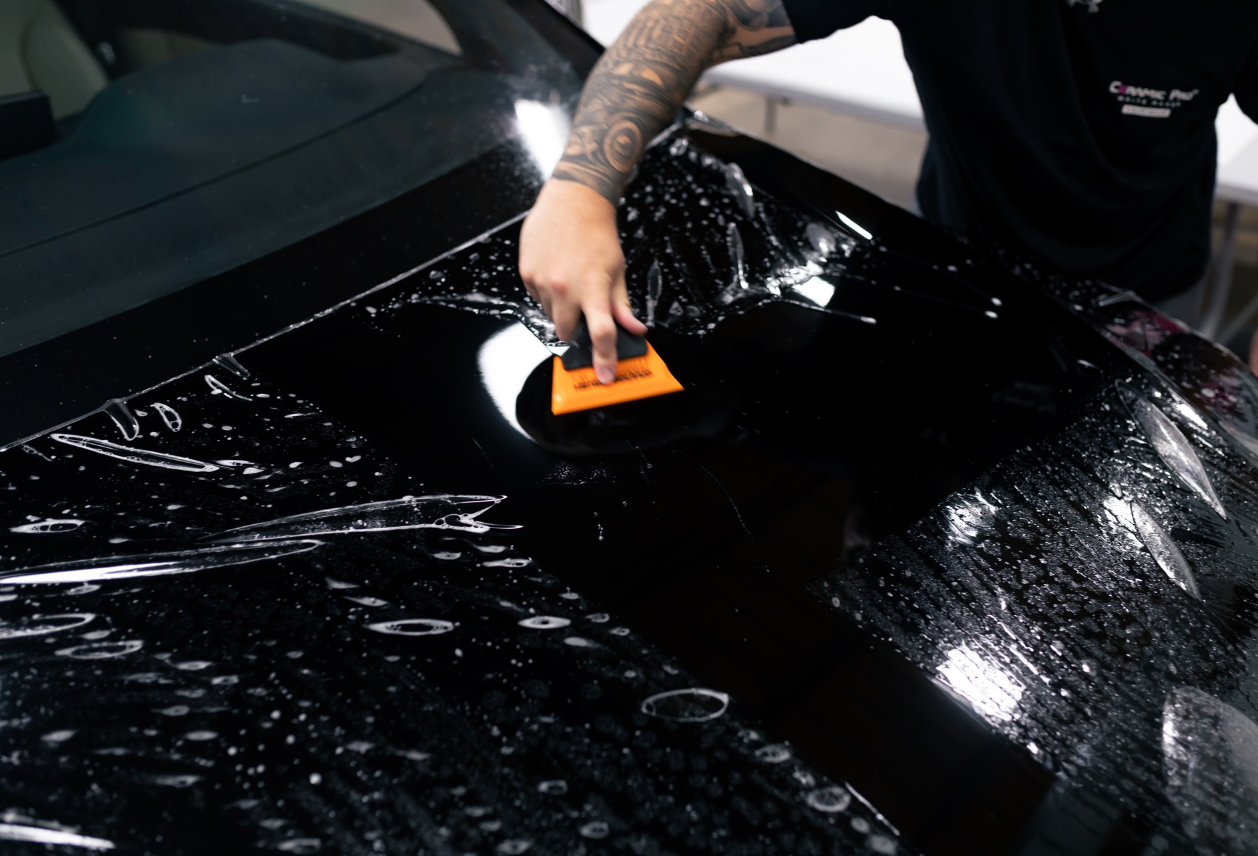What’s Destroying Your Ceramic Coating? Avoid These Hazards
It can be challenging to maintain the pristine appearance of your car, especially when it comes to safeguarding your ceramic coating. It can be challenging to maintain the pristine appearance of your car, particularly when it comes to safeguarding your ceramic coating. After all, you invested valuable time and money into applying this high-tech shield for your vehicle, so the last thing you want is for it to lose its luster. But did you know that simple everyday actions—and even some common cleaning habits—can undermine the effectiveness of that shiny protective layer? Let’s dive into the top hazards that threaten your ceramic coating and how you can safeguard it against them. With a little awareness, you can maintain the sleek and stunning appearance of your car for years to come.
Several hazards can threaten your ceramic coating, including improperly applied wax or sealants, exposure to harsh chemicals, and environmental contaminants such as bird droppings or tree sap. Additionally, the use of mechanical car washes with abrasive brushes can scratch the coating's surface, compromising its integrity. Therefore, it is crucial to use proper maintenance techniques, such as swirl-free motions, to preserve its durability and shine.
Common Dangers to Your Ceramic Coating
One of the unseen enemies of ceramic coatings is exposure to environmental contaminants. This includes things like bird droppings, tree sap, and industrial fallout. If these substances are not removed promptly—ideally within 24 hours—they can etch into the coating, leading to permanent damage through a process known as oxidation. Regular maintenance washes become vital, especially during seasons when such threats are more prevalent.
UV Radiation
Prolonged exposure to sunlight can cause significant damage to your coating over time. The sun's ultraviolet rays can cause fading and degradation of both the paint beneath and the ceramic coating itself. Such degradation is why it's crucial to periodically apply UV protectants to shield against these harmful rays. Think about it: just as you wouldn't go out without sunscreen in the scorching sun, your car also deserves protection from those relentless rays.
Temperature Extremes
This brings us to another significant factor—the impact of extreme temperatures. High heat (above 140°F (ca. 60 °C)) can cause the coating to break down, while bitterly cold conditions can lead to cracking. Ideal application temperatures should hover between 50°F (ca. 10 °C) and 80°F (ca. 27 °C) for optimal results. It’s wise to pay attention to weather forecasts before undertaking any maintenance work or even considering installing a new ceramic coating.
However, even though we have some control over how we wash and maintain our cars, neglecting regular maintenance can result in deterioration that no car owner wants to deal with.
Neglecting Maintenance
Failing to regularly maintain your ceramic coating can significantly lead to the buildup of contaminants that tarnish its appearance and degrade its protective benefits. A simple maintenance wash every 1-3 months can help preserve that glossy finish while ensuring dirt and grime don’t take root and form stubborn stains or scratches on the surface. Using proper swirl techniques during washing can further enhance the coating’s longevity.
Environmental and Weather Hazards
Then there's the issue of acid rain, which seems innocent enough, right? But the truth is, acid rain can significantly damage your ceramic coatings over time. The rain becomes acidic due to pollutants interacting with moisture in the atmosphere. When this acidic rain lands on your vehicle, it doesn’t just wash off; it chemically reacts with the coating, weakening its protective barrier and leaving visible marks. To minimize damage from such weather conditions, simply rinsing your car after rain can be a lifesaver. This routine practice helps keep any lingering acidic residue from causing harm.
Acid Rain
Of course, let’s not forget about other environmental hazards like extreme temperatures and contaminants—they're also worth discussing when considering the health of your ceramic coating.
High temperatures above 140°F (60°C) can lead to a breakdown of ceramic coatings, compromising their durability and protective capabilities. Moreover, fluctuations in temperature cause thermal expansion and contraction, leading to micro-cracking that can defeat the purpose of having a protective layer in the first place. In cases where the temperature drops quickly or rises dramatically (more than 30°F (-1.11 °C) in a short period), you risk damaging the coating even before you realize it. Such extremes can also diminish the ability of the coating to protect the underlying paint effectively.
It's essential to consider how exposure to environmental contaminants—like bird droppings or tree sap—can affect your vehicle's shine as well. Bird droppings are particularly concerning because they have a pH level between 3 and 4, which is highly corrosive and can etch into ceramic coats if left untreated. These contaminants can cause unsightly marks and reduce the vehicle's ability to maintain its pristine appearance.
Lastly, high humidity levels above 70% can prevent proper curing of ceramic coatings, meaning they might not bond well and will ultimately underperform when you need them most. This delicate dance between humidity and curing requires careful consideration if you want your vehicle to maintain its protective qualities.
Arming yourself with knowledge about these environmental hazards creates a pathway toward better care practices for your vehicle's protective finishes. As we look closer at another critical aspect, understanding proper cleaning techniques will further enhance the life and performance of your ceramic coating.
Incorrect cleaning can lead to severe damage to ceramic coatings, and it's surprising how many classic mistakes people make during this routine task. For instance, using common household dish soaps might seem harmless at first, but they are anything but ideal when it comes to your vehicle's finish. Designed primarily to tackle kitchen grease, dish soaps strip away essential oils and protections from your vehicle's surface, ultimately degrading the integrity of your ceramic coating. Over time, such degradation could leave your car vulnerable to scratches, environmental contaminants, and the potential for visible marks.
To preserve your ceramic coating's ability to protect your vehicle, using the right cleaning products is crucial.
Risk of Improper Cleaning Methods
Using household cleaners is another common oversight. Many individuals reach for all-purpose cleaners that promise a sparkling shine; however, these products often contain harsh chemicals unsuitable for delicate automotive surfaces. These agents can chemically interact with your ceramic coating, leading to reduced durability and an unsightly appearance. It's essential to appreciate the aesthetics of your vehicle by using appropriate cleaning methods designed specifically for cars.
Furthermore, adopting improper drying techniques can escalate the issue even further. Using rough towels or any fabric that isn't specifically designed for automotive care can introduce micro-scratches on the coating’s surface. Even a gentle swipe can create visible flaws that compromise the glossy finish you're aiming for, affecting the overall aesthetics of your car.
To counteract these issues, replacing coarse materials with soft microfiber towels has proven effective in significantly reducing risks of scratching. Microfiber fibers are designed to lift dust and grime without damaging surfaces, providing a safer option for drying while preserving the integrity of the coating.
Regular maintenance isn’t just about cleanliness; it’s about using the right products and techniques that work harmoniously with the ceramic coating. Invest in automotive-specific cleaning products to ensure long-lasting protection and a pristine appearance while preventing unnecessary damage.
Knowing which cleaning products to avoid ensures the longevity of your ceramic coating and improves your vehicle's appearance. With these precautions in mind, let’s now turn our focus to another significant threat that lurks in everyday environments—unexpected damage caused by physical abrasions.
- Dish Soaps: Avoid entirely as they strip protective properties.
- Household Cleaners: Steer clear; choose automotive-specific alternatives instead.
- Abrasive Pads: Never use them—opt for soft microfiber towels that promote safe drying.
Damage from Physical Abrasions
Think about your vehicle encountering small stones or grit on the road; even minor impacts can create tiny chips in the ceramic layer, allowing moisture to seep beneath the coating.
Take, for instance, the common scenario of driving behind a truck on a gravel road. Every stone kicked up may cause slight abrasions that accumulate over time. If you find yourself frequently navigating such terrains, it’s wise to modify your driving habits. You can reduce the chance of debris striking your car and destroying its protective layer by avoiding tight tailgating behind larger vehicles. Installing mud flaps can further shield your vehicle from exposure by helping to deflect rocks and dirt away from the surface.
But it's not just external forces we need to worry about; improper care techniques can also inflict considerable harm.
One significant risk arises from aggressive polishing practices. Many DIY enthusiasts tend to overzealously polish, mistakenly believing that harsh tools or excessive pressure will produce better results. However, this common misconception can actually lead to the complete removal of your carefully applied ceramic coating. There are countless stories shared within detailing circles about individuals left disheartened after spending hours meticulously applying their coating only to see it stripped away by poorly executed buffing techniques.
Ensuring the aesthetics of your car remain intact requires patience, knowledge, and the right approach to care and maintenance. To mitigate these risks, it’s crucial to use softer microfiber cloths and moderate pressure while polishing. Understanding how to handle your tools is just as important as having them; adopting a gentle touch can significantly preserve the integrity of your coating, especially on the vehicle's exterior. Furthermore, using a two-bucket wash method during cleaning sessions reduces the likelihood of introducing scratches caused by prior debris lingering in soapy water.
Avoid High Pressure: Use light pressure in polishing and buffing, especially when treating the exterior surfaces of your vehicle.
Choose Soft Materials: Always opt for quality microfiber cloths instead of rougher alternatives to better protect the exterior finish.
Employ Safe Techniques: Familiarize yourself with appropriate washing methods, such as two-bucket systems, specifically designed to safeguard the exterior from scratches.
With an awareness of what could degrade your ceramic coating, it's essential to consider how routine upkeep plays a vital role in maintaining its effectiveness. A deeper exploration of consistent care routines will be beneficial for protecting your investment long term, ensuring that the exterior remains as impactful as the performance itself.
Regular maintenance is crucial for preserving the longevity of a ceramic coating. Without it, your investment in that glossy, protective layer may start to fade—quite literally. Over time, environmental contaminants such as dirt, salt, and grime accumulate on the vehicle's exterior surface, compromising the hydrophobic qualities that make ceramic coatings so effective.
Imagine washing your car only to find that water no longer beads up on the exterior; this symptom is often due to neglecting regular cleaning routines.
Professional Application
Professionals don’t just have years of experience; they utilize specialized equipment and controlled environments designed to minimize errors during application. Imagine having access to advanced tools and expert techniques—this ensures thorough preparation resulting in superior outcomes. Coupled with the fact that many professionals offer warranties, it means you can rest easy knowing your investment is protected.
According to recent surveys, approximately 70% of users prefer professional applications due to the peace of mind it brings. This trust in expertise highlights a broader trend: people value longevity and reliability over short-term gains when maintaining their prized possessions—their vehicles.
Thus, when deliberating between DIY efforts and professional assistance, think critically about your current skill level and willingness to invest time and resources into achieving the desired appearance for your vehicle.
Making an informed choice will ultimately lead to better results in protecting your car’s beauty for years to come.
In conclusion, if you're ready to protect your investment with a professional touch rather than risk it with a DIY approach, reach out today at
Baltimore Detail
or call us at (410) 238-3000!




